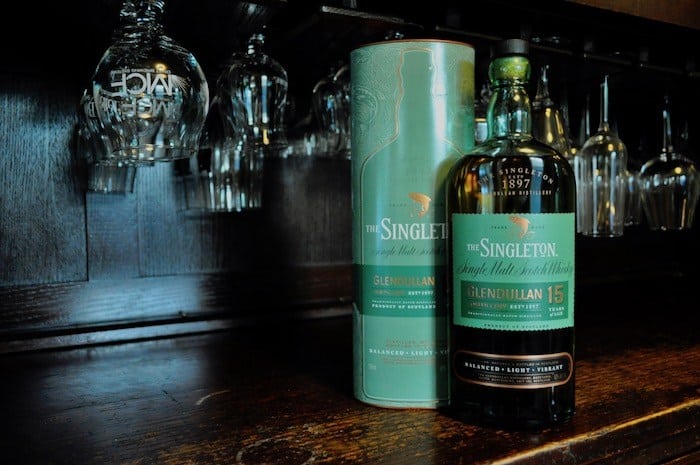There’s something ironic about the fact that there are three Singletons. This one, The Singleton of Glendullan, is distributed exclusively in the United States. The others, The Singleton of Dufftown and The Singleton of Glen Ord, are only available in Europe and Asia, respectively. I suppose “Trifecta” must have been taken.
Jokes aside, the Singleton of Glendullan is a Diageo release that shines a light on the Glendullan Distillery, a somewhat under-the-radar whisky maker that is nevertheless one of the largest production facilities in all of Scotland. According to Malt Madness, in 2008, its production was 4 million liters of pure alcohol, making it the third-largest distillery in the nation.
Founded in the late 19th century, it’s one of the six remaining Dufftown distilleries still in production. The others include Balvenie, Dufftown, Glenfiddich, Kinninvie, and Mortlach, with which Glendullan once shared a rail spur. Some say no other municipality in the entire United Kingdom is as reliant on whisky-related tax revenue than Dufftown.
Glendullan produces a light, fruity style aligned with the classic Speyside flavor profile, which has made its spirit highly desirable for blenders. Until recently, that meant the vast majority of its whisky ended up as a component of blends, rather than a standalone single malt expression. A few official single malt bottlings arose in the 2000s, but it wasn’t until late 2016 that Diageo appeared to truly change its tack, introducing three different age-stated The Singleton of Glendullan expressions, a 12-year-old, a 15-year-old, and an 18-year-old, to the U.S market. This review focuses on the 15-year-old.
 Tasting Notes: The Singleton of Glendullan 15-year-old
Tasting Notes: The Singleton of Glendullan 15-year-old
Vital Stats: 15 years old, single malt, $40-$45 for a 750.
Appearance: It’s a hefty bottle, made from an appealing jade-green glass in a wide, satisfyingly grabbable flask shape. In the glass, the whisky glows like a bright copper penny.
Nose: A nice balance of fruit and malt greets the nose, with the fruit tending towards the lighter side – red plum and banana, mostly, with some strawberry in the mix for good measure. There’s also warm canvas, like waking up in one of those old-school military surplus tents on a late summer morning, plus a slight whiff of sulphur, some dark salted toffee, and a dollop of pool water.
Palate: The palate is full-bodied, with a base of honey-drizzled grain building to a gentle sweet fruit crescendo, replete with fresh orange peel, white grape, and dried figs. There’s something about this that reminds me a lot of fortified wine—Vin Santo, perhaps?—with a raisinated, slightly nutty quality. That richness thins out to a lean finish, leaving a slightly bitter, almost camphor-like aftertaste.

 Tasting Notes: The Singleton of Glendullan 15-year-old
Tasting Notes: The Singleton of Glendullan 15-year-old






